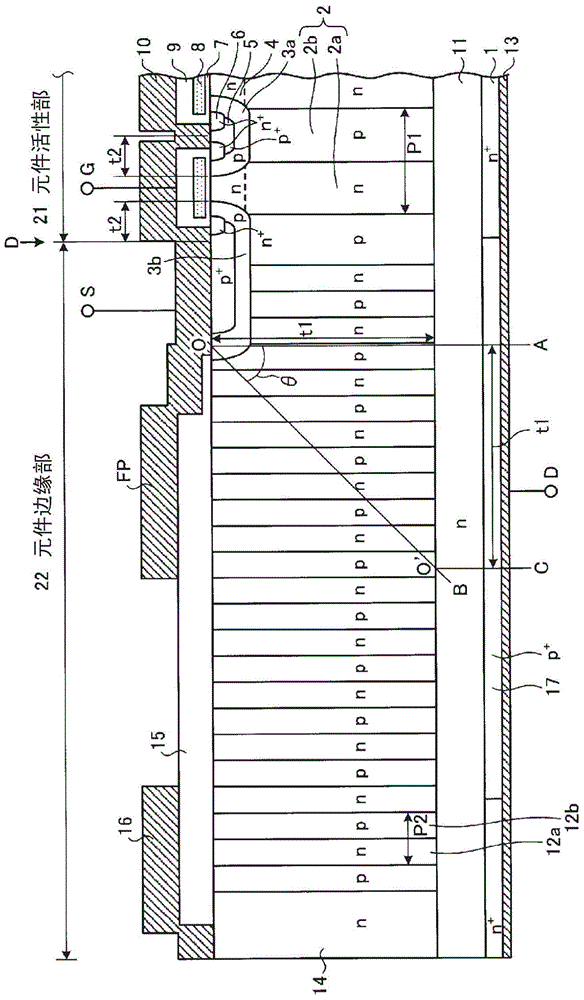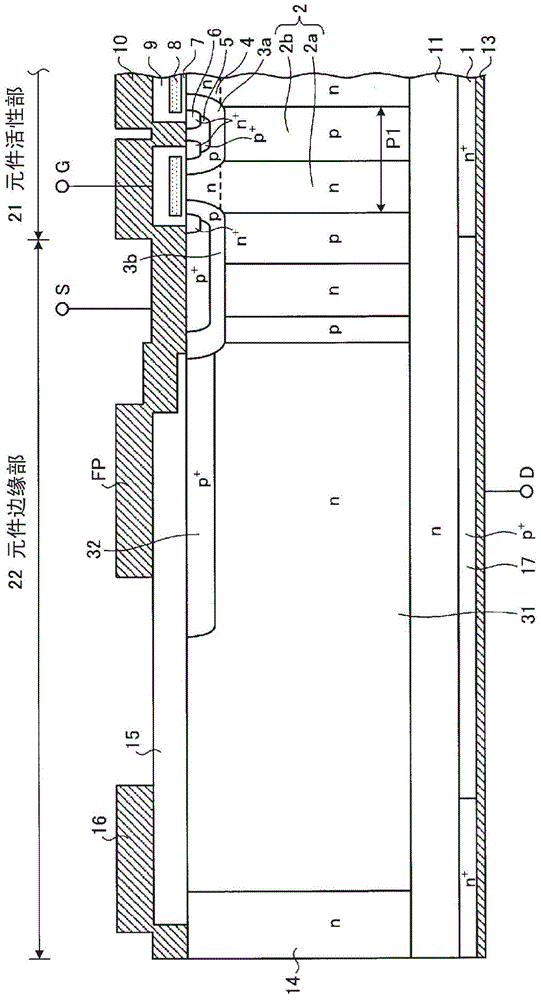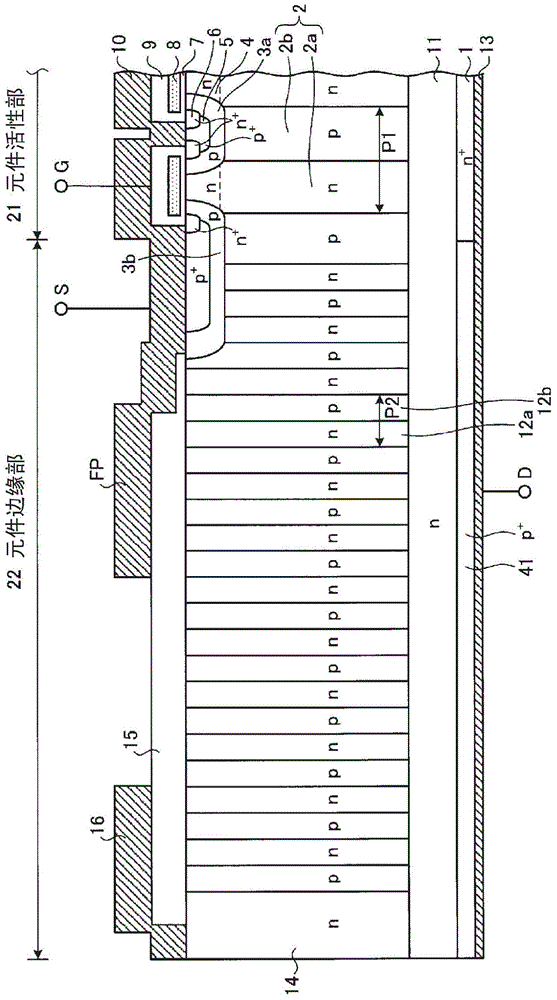Semiconductor element
A technology for semiconductors and components, applied in the field of semiconductor components, can solve problems such as component damage, and achieve the effect of improving damage tolerance
- Summary
- Abstract
- Description
- Claims
- Application Information
AI Technical Summary
Problems solved by technology
Method used
Image
Examples
Embodiment approach 1
[0041] Taking an n-channel vertical MOSFET with a planar gate structure as an example, the semiconductor device structure described in Embodiment 1 will be described. figure 1 It is a cross-sectional view showing the structure of the semiconductor device according to the first embodiment. figure 1 The semiconductor element described in the illustrated embodiment 1 is a super-junction MOSFET provided with a drain drift portion (vertical drift portion) 2 of a first parallel pn structure. On the surface layer on one of the surface sides of the drain drift portion 2 (hereinafter referred to as the substrate surface side), a p base region 3a of high impurity concentration as the element active portion 21 is selectively provided. The substrate refers to an epitaxial substrate described later.
[0042] On the inner substrate surface side of the p base region 3a is selectively provided with high impurity concentration p + Contact area 5 and n + Source area 6. n + The source region 6 is...
Embodiment approach 2
[0067] The structure of the super junction semiconductor element described in Embodiment 2 will be described. figure 2 It is a cross-sectional view showing the structure of the semiconductor device according to the second embodiment. The difference between the super junction semiconductor element described in the second embodiment and the super junction semiconductor element described in the first embodiment is that an n-type bulk (BULK) region 31 continuous with the first parallel pn structure is provided instead of the second parallel pn structure. In addition, a p-type RESURF region 32 is provided on the surface layer on the substrate surface side of the n-type bulk region 31.
[0068] The n-type block region 31 is a region between the first parallel pn structure provided from the element active portion 21 to the element edge portion 22 and the n-type channel cutoff region 14 provided on the outermost side of the element edge portion 22. The p-type RESURF region 32 is selecti...
Embodiment approach 3
[0072] The structure of the super junction semiconductor element described in Embodiment 3 will be described. image 3 It is a cross-sectional view showing the structure of the semiconductor device according to the third embodiment. The difference between the super junction semiconductor element described in Embodiment 3 and the super junction semiconductor element described in Embodiment 1 is as follows: + The outer end portion of the drain region 41 extends to the outer periphery (the side surface of the substrate) of the element edge portion 22. The structure of the super junction semiconductor element described in Embodiment 3 other than this is the same as that of the super junction semiconductor element described in Embodiment 1. In addition to the p of the method of manufacturing a super junction MOSFET described in Embodiment 3 + Except for the difference in the formation range of the drain region 41, the other is the same as the manufacturing method of the super junctio...
PUM
 Login to View More
Login to View More Abstract
Description
Claims
Application Information
 Login to View More
Login to View More - R&D
- Intellectual Property
- Life Sciences
- Materials
- Tech Scout
- Unparalleled Data Quality
- Higher Quality Content
- 60% Fewer Hallucinations
Browse by: Latest US Patents, China's latest patents, Technical Efficacy Thesaurus, Application Domain, Technology Topic, Popular Technical Reports.
© 2025 PatSnap. All rights reserved.Legal|Privacy policy|Modern Slavery Act Transparency Statement|Sitemap|About US| Contact US: help@patsnap.com



